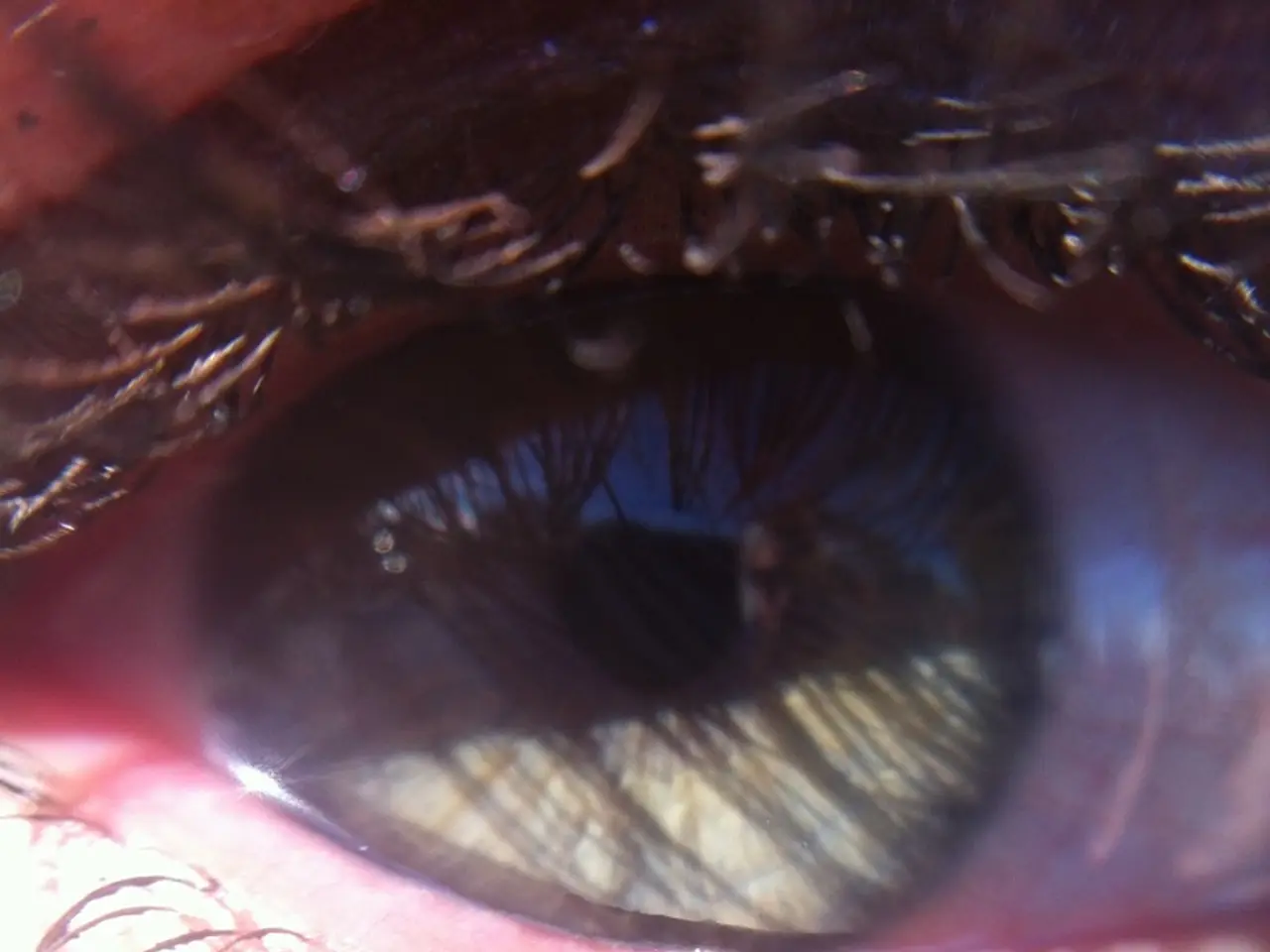Eye Discharge: Root Causes and Solutions for Crusty Eyes
Crusty eyes can be a common and uncomfortable issue, but understanding the causes and treatments can help alleviate discomfort. This article explores the various conditions that lead to crusty eyes, their treatments, and how to prevent them.
Crusty eyes can be a symptom of several eye conditions, including blepharitis, conjunctivitis (pink eye), blocked tear ducts, dry eye syndrome, and styes.
Blepharitis, an inflammation of the eyelid margins, causes crusting, redness, and irritation. Treatment for blepharitis includes regular eyelid hygiene with warm compresses and cleaning to reduce inflammation and crusts.
Conjunctivitis, or pink eye, can be caused by a viral or bacterial infection or an allergy. Viral pink eye usually improves in 1-2 weeks, while bacterial pink eye requires antibiotics. Allergic conjunctivitis, caused by an allergic reaction, has symptoms similar to viral or bacterial eye infections and is treated with antihistamines or anti-allergy eye drops.
Blocked tear ducts, a common issue in newborns, cause tears to build up and dry, resulting in crusty eyelids. Gentle massage, warm compresses, and antibiotics may be used to treat blocked tear ducts, with minor surgical intervention in persistent cases.
Dry eye syndrome, caused by insufficient tear production, can also lead to crusty eyes. Treatments for dry eye include artificial tears, omega-3 supplements, anti-inflammatory medications, and punctal plugs to retain tears.
A stye is an inflamed oil gland on the rim of the eyelid that can cause crusty eyes. Treatment for a stye includes warm compresses and, in some cases, antibiotic ointment or topical steroid.
To prevent eye conditions in babies, caregivers should clean their baby's hands and face often, give them a facial massage to prevent tears from accumulating in blocked ducts, use eye drops if a doctor recommends them, ensure the baby's environment is clean and hygienic, and change clothes and wash faces after being outside.
In summary, understanding the causes of crusty eyes is essential in selecting the appropriate treatment. Proper diagnosis by an eye care professional is important to ensure the correct treatment plan. If large amounts of discharge, green, yellow, or white discharge, or swollen eyes are present, medical attention is necessary.
- Crusty eyes can result from multiple eye conditions, such as blepharitis, conjunctivitis (pink eye), blocked tear ducts, dry eye syndrome, and styes.
- Blepharitis, an inflammation of the eyelid margins, can cause crusting, redness, and irritation; treatment involves regular eyelid hygiene with warm compresses and cleaning to reduce inflammation and crusts.
- Conjunctivitis, or pink eye, may be caused by a viral or bacterial infection or an allergy; viral pink eye usually improves in 1-2 weeks, while bacterial pink eye requires antibiotics, and allergic conjunctivitis is treated with antihistamines or anti-allergy eye drops.
- Blocked tear ducts, common in newborns, cause tears to build up and dry, resulting in crusty eyelids; treatment includes gentle massage, warm compresses, antibiotics, and minor surgical intervention in persistent cases.
- Dry eye syndrome, caused by insufficient tear production, can lead to crusty eyes; treatments include artificial tears, omega-3 supplements, anti-inflammatory medications, and punctal plugs to retain tears.
- A stye is an inflamed oil gland on the rim of the eyelid that can cause crusty eyes; treatment for a stye includes warm compresses and, in some cases, antibiotic ointment or topical steroid.
- To prevent eye conditions in children's health, caregivers should clean their baby's hands and face often, give them a facial massage to prevent tears from accumulating in blocked ducts, use eye drops if a doctor recommends them, ensure the baby's environment is clean and hygienic, and change clothes and wash faces after being outside.
- In the realm of health-and-wellness, seeking preventative measures and proper treatment for eye conditions is essential, as understanding the causes can help alleviate discomfort and promote better overall eye health.
- Predictive science plays a crucial role in the study and prevention of eye infections, as it helps medical professionals identify and treat conditions before they become severe.
- Lung cancer, hepatitis, depression, and arthritis are unrelated to crusty eyes, but they are significant health concerns that require proper diagnosis and treatment in those affected.
- Switchers, in this context, refer to people who frequently switch between treatments, often due to seeking the most effective solution for their eye conditions or a more comfortable option.
- Psoriatic arthritis affects the joints, causing pain, swelling, and stiffness; while unrelated to crusty eyes, understanding and managing this disease is essential for maintaining a person's overall health and wellness.




